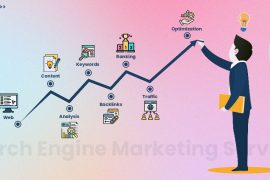Content marketing is one of the perennial concepts of online marketing strategy. It is a must-have tool to keep your marketing campaigns organized for maximum efficiency, performance, and productivity. With the help of an editorial calendar, you can think more strategically and plan the content you wish to create in a better way.
For building a proper content strategy, it is imperial to invest some time in developing a proper content strategy. Content marketing calendar has different formats to offer that include,
- Your content team’s size
- The volume of the content you plan to create
- Timeframe according to which you wish to plan for
Below are the different forms of content calendar one should be aware of,
The Traditional one
While creating a traditional content calendar, you can plan out your weekly, monthly, quarterly, or yearly content in a Google Calendar or maybe even one of those desktop, papery things.
A Spreadsheet
You can use spreadsheets within Excel or Google Sheets to organize and sort your content by date, time, theme, buying stage, and audience. You can also share the editable document along with your team so that everyone can see what is in the content and what is to be created by who and when. You can try different things like color-coding or other related methods to help your team to focus on details.

A project management platform
When the organizations have spreadsheets and email in abundance along with several other online tasks, tools like Asana, Monday.com, Trello, Basecamp, or Wrike help a lot in streamlining the process.
These tools are tailor-made for teams to manage projects like content campaigns by incorporating workflows, calendars, Gantt on Kanban charts, and other automated notifications.
A platform for content marketing
There are several content marketing platforms like CoSchedule, Newscred, Percolate, DivyHQ, Mintent, are among those that are tailor-made to manage content as opposed to general projects. These tools also include custom calendars and other visualizations, configurable content briefs, notifications, and workflows.

Also, Read – A Deep Insight On SEO Internal Linking
Content Planning
Content should be planned in a manner that satisfies the below-given aspects.
Defining the audience
With a clear definition of member profiles, you can plan on what and how to populate your content calendar. Take your time to create detailed personas of those who will be up to consume your content. Here, each persona will differ in terms of the way they consume the content you are creating for them.

The personas should carry out things like,
- Demographic Information: This includes gender, age, location, marital status, etc
- Preferred content types: Video, Audio, Print, Text, Images, etc
- Preferred content channels: Email, website, offline, social, etc
- Consumption behaviors: when (day/evening/night) and how long (short vs long-form content)
Intent-based content
You are creating content to answer all the questions your target audience has about your products and services. Content marketing’s effectiveness is based on this concept only. Modern content marketing goes well beyond describing how your products and services can aid your customers. Your content should typically meet these three categories,
- Educational content: From the top of the funnel content for those who are just starting to learn
- Informational content: It should be informational and middle of the funnel content who are comparing solutions
- Commercial content: It starts from the bottom of the funnel content for customers who are comparing solutions
Timing
Timing plays a vital role in SEO content. Especially when it comes to social media publishing, and when there is a lot of data going around to get published. Almost every social media platform has defined its most relevant time to display content to users based on their location, engagement history, and other factors.
Likewise, some studies suggest what is best to deliver email communications to improve click-throughs and open rates. Apart from different studies, you can also refer to your own social and web analytics to determine your specific audiences’ performances.
Content along with resource management
In SEO, content with resource management lends benefits to a centralized content calendar. The content managers have the ability to quickly review, address, and identify content opportunities in their topics or types.

These data points help a lot t effectively filter and sort the content you create and manage within your calendar to help you focus better on resources. An updated calendar will also help you manage resources by seeing which team members can work on specific projects or tasks. If you assign priorities with each content item, your projects are then ensured to stay on schedule and budget.
SEO professionals also opt to subscribe to a content pillar strategy. In this several complementary pieces of content that could be blog posts and articles are linked to relevant keywords for a better SEO.
Time to wrap up: No matter how big or small your organization is, a well-mapped content calendar strategy always works. It will help guide your thoughts, resources, and campaigns for optimal performance. Creating and managing a profounded strategically marked content calendar will seamlessly drive your results to the next level in internet marketing.


 | 500+ Customer from BMBS to Fortune 500 companies
| 500+ Customer from BMBS to Fortune 500 companies







